Redirecting restored files
LiveVault gives you the option to restore files to a different directory than the directory they were originally backed up from. You also have the option to restore files to another computer on your network. The two options can be combined; you can restore files to a different directory on a different computer. However, the computer you are restoring files to must have a LiveVault agent running on it, and must have stored locally a copy of the encryption key from the computer that the data was originally backed up from. A LiveVault agent computer can have encryption keys from multiple computers, but you must retrieve each of the keys individually.
Prerequisites
If the computer that you wish to restore files to does not have a copy of the encryption key from the computer that was originally used to provide the backed up data, then you must retrieve the encryption key from the original source computer. To do this you must know the encryption key password for the original source computer before proceeding with this task.
Limitations
The following restore scenarios are not supported.
- Redirected restore to a mounted network drive.
- Restore to a non-clustered volume of a clustered agent.
- Redirected restore from Windows to Linux, or Linux to Windows file systems.
- Redirected restore of an Exchange policy when the restored version of Microsoft Volume Shadow Copy Service (VSS) does not match the current version. You must install the same version of VSS that exists in the restored version.
- If you are redirecting an Exchange restore to a different location when you have mount points and log files for a database, then select Don't preserve directories.
Caution:
Do not restore a System State from the original computer to another computer with a different hostname. This will cause the target computer to fail.
Redirecting restored files to another computer
Ensure that the computer you want to restore to has a local copy of the encryption key from the computer that the data was originally backed up from. You will not be able to restore to this computer unless it has a copy of the exact encryption key of the computer from which the data was backed up.
If you don't have a copy of the encryption key then you will need to retrieve it.
Retrieving a copy of the encryption key
To retrieve a copy of the encryption key, proceed as follows.
At the computer to which you are restoring data to,
- Select Start > Programs > LiveVault Backup > LiveVault Configuration Wizard menu, then run the LVRegister Configuration Wizard utility.
- Select Retrieve Encryption keys from another computer to enable restore.
- Click Next.
- From the Choose the source computer list, select the source computer.
- Enter the Encryption Key Password for the source computer.
- Click Next.
- Click Finish.
Redirecting restored files to another computer
To redirect restored files to another computer, login to the LiveVault Portal and proceed as follows,
From the Welcome! HOME page, in the left hand navigation pane,
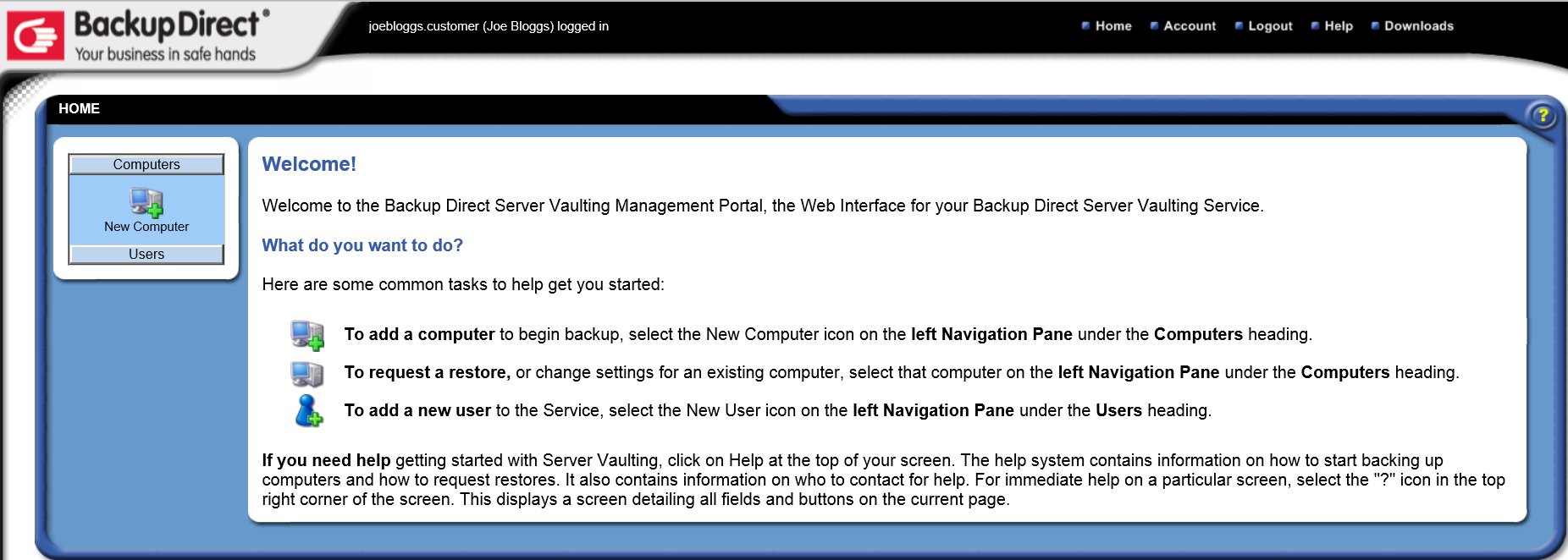
- Select the computer.
The Computer Summary page opens.
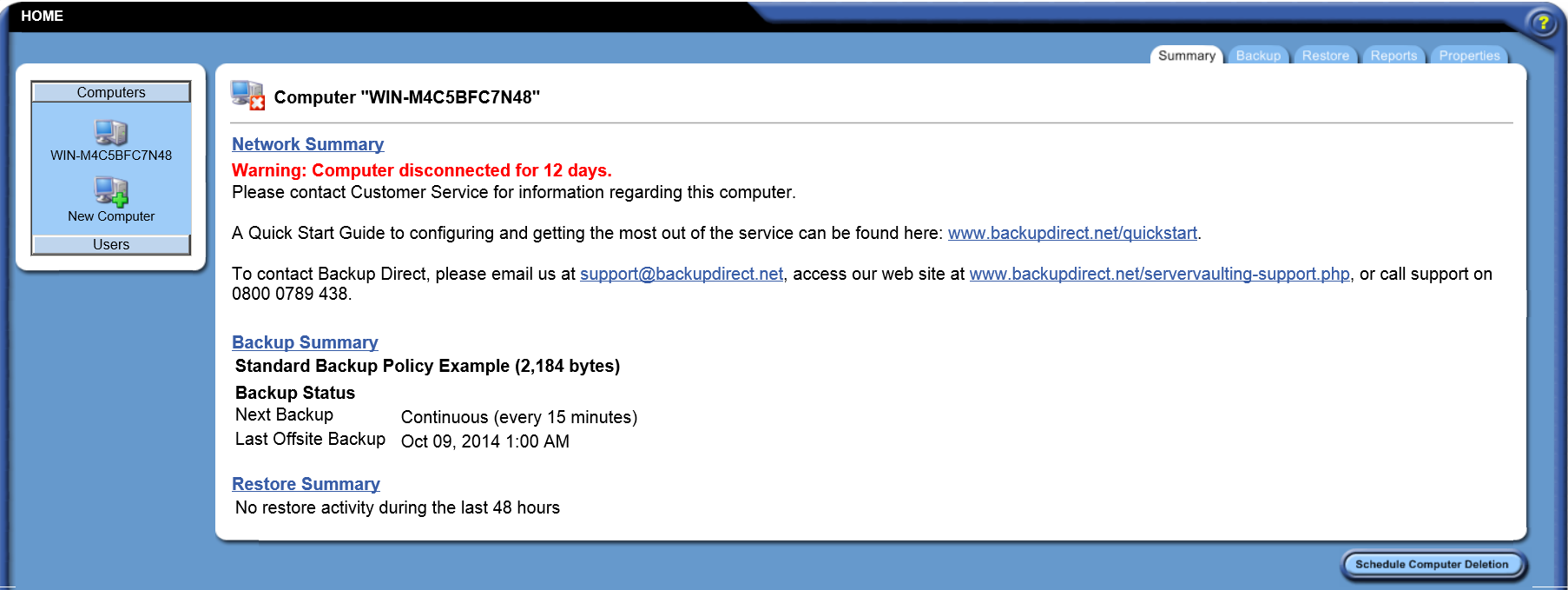
- Select the Restore tab.
The Restore page opens.

- Click the New Restore button, to submit a request to restore data.
The Restore Wizard opens a New Restore Request page.

- Select Restore data over the internet, or Have Media Restore Device shipped to you, as required.
- Click Next.
The Restore Request for… page opens on the Selection tab.
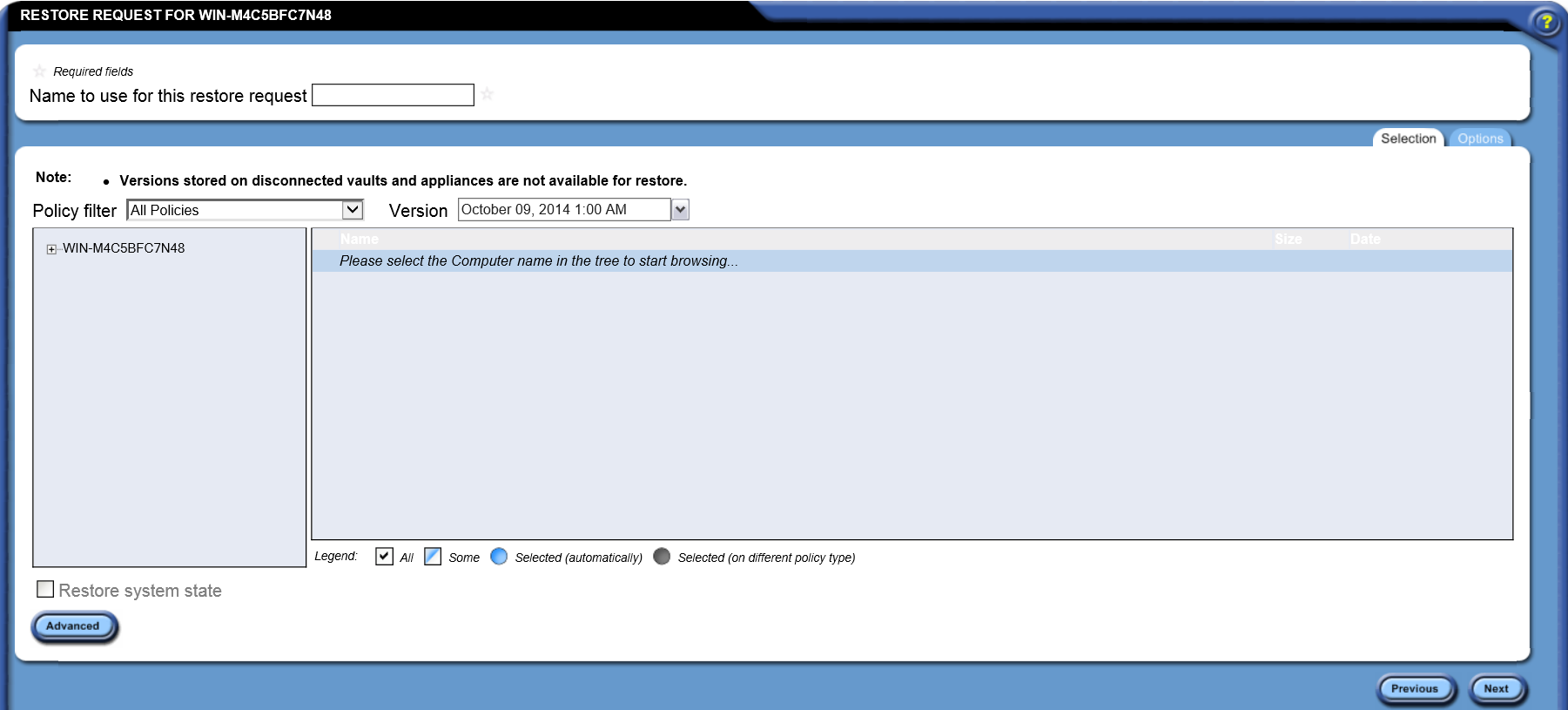
- Enter details as required:
- Name to use for this restore request. This is a mandatory field.
- Policy filter. Select policy from dropdown menu.
- Version. Select version (date) of policy from dropdown menu.
- From the left hand navigation pane, select the folders or files to be restored.
- Click the Options tab.
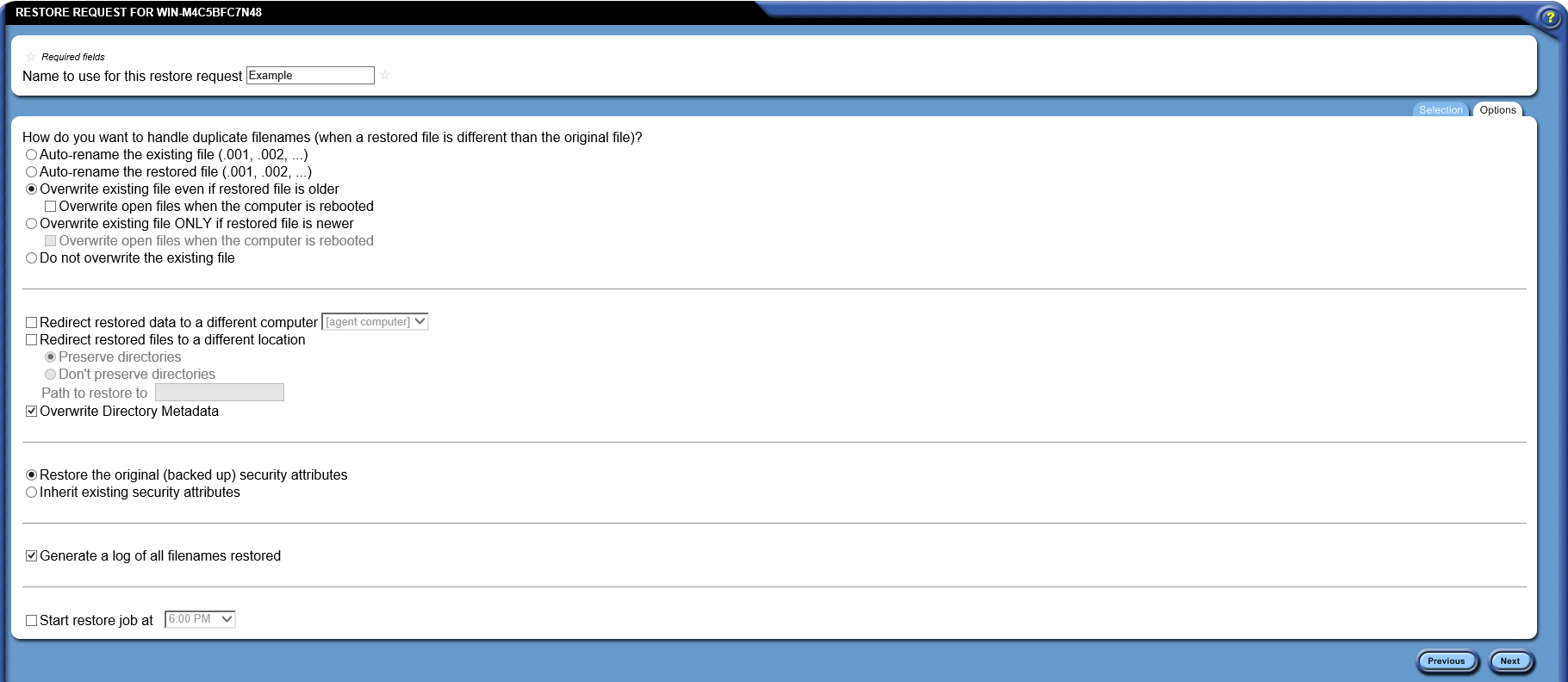
- Enter details as required:
- How do you want to handle duplicate filenames? Select as required.
- Select Redirect restored data to a different computer then, from the dropdown menu, select the agent computer to which you want to restore the files.
- In Path to restore to, enter a valid directory path to restore to.
- Tick Start restore job at, and select a start time for the restore action.
- Click Next.
- The Restore Request Summary page opens.
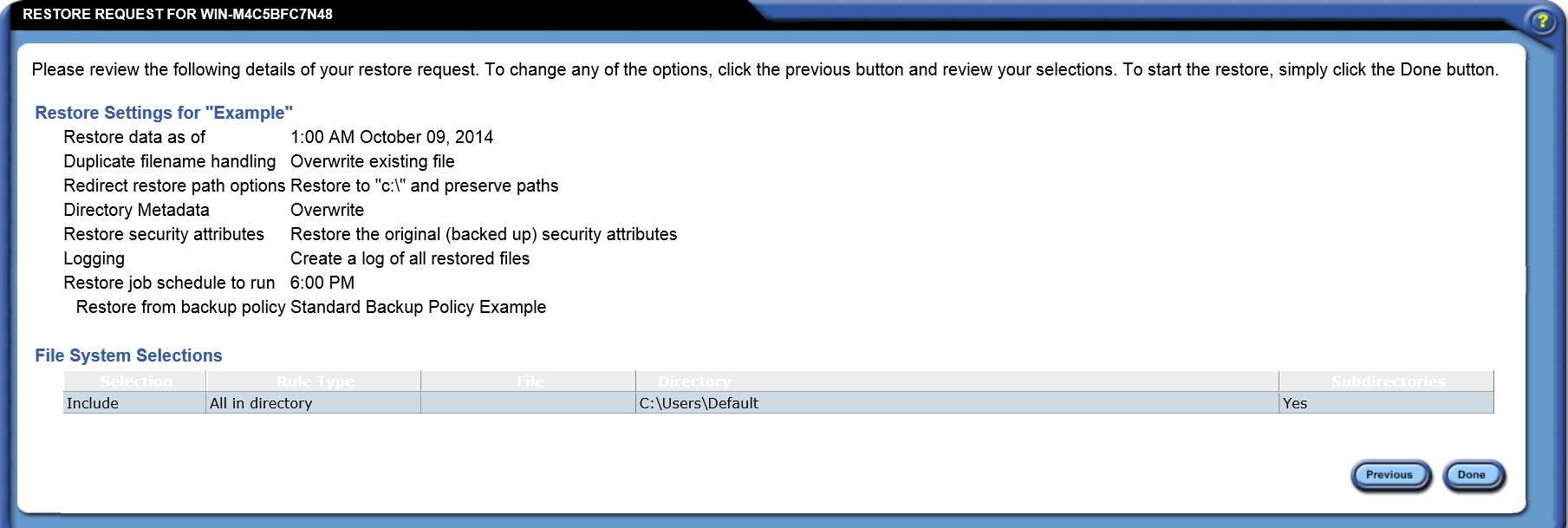
- Click Done to start the restore.
Redirecting restored files to a different directory
To restore files to a different directory
Follow step 1 to step 7 for Redirecting restored files to another computer.
- In the Options tab, enter details as required:
- How do you want to handle duplicate filenames? Select as required.
- Tick the Redirect restored files to a different location check box, and select Preserve directories or Don't preserve directories as required.
Notes:
To preserve the directory tree structure from which the files were backed up, select Preserve Directories.
The directory structure must exist in the same form as it did when the files were backed up; if it is different, then the backup directory structure is recreated, starting at the home directory.
If you select Don't preserve directories, then files are restored at the directory you specify in the Path to restore to box. The directory tree is not preserved, all files are restored to the same directory, and directory and subdirectory names are restored as objects.
If you select Don't preserve directories and don't specify a path to restore to, then the files are restored to the home directory.
Example: If you choose to restore the following file, C:\MyDocuments\Presentations\Sales1.ppt, and redirect the restored file to C:\Common, then: If you select Preserve directories, the file will be restored to C:\Common\MyDocuments\Presentations\Sales1.ppt. If you select Don't preserve directories, the file will be restored to C:\Common\Sales1.ppt.
- In Path to restore to, enter a valid directory path to restore to.
- Tick Start restore job at, and select a start time for the restore action.
- Click Next.
- The Restore Request Summary page opens.

- Click Done to start the restore.